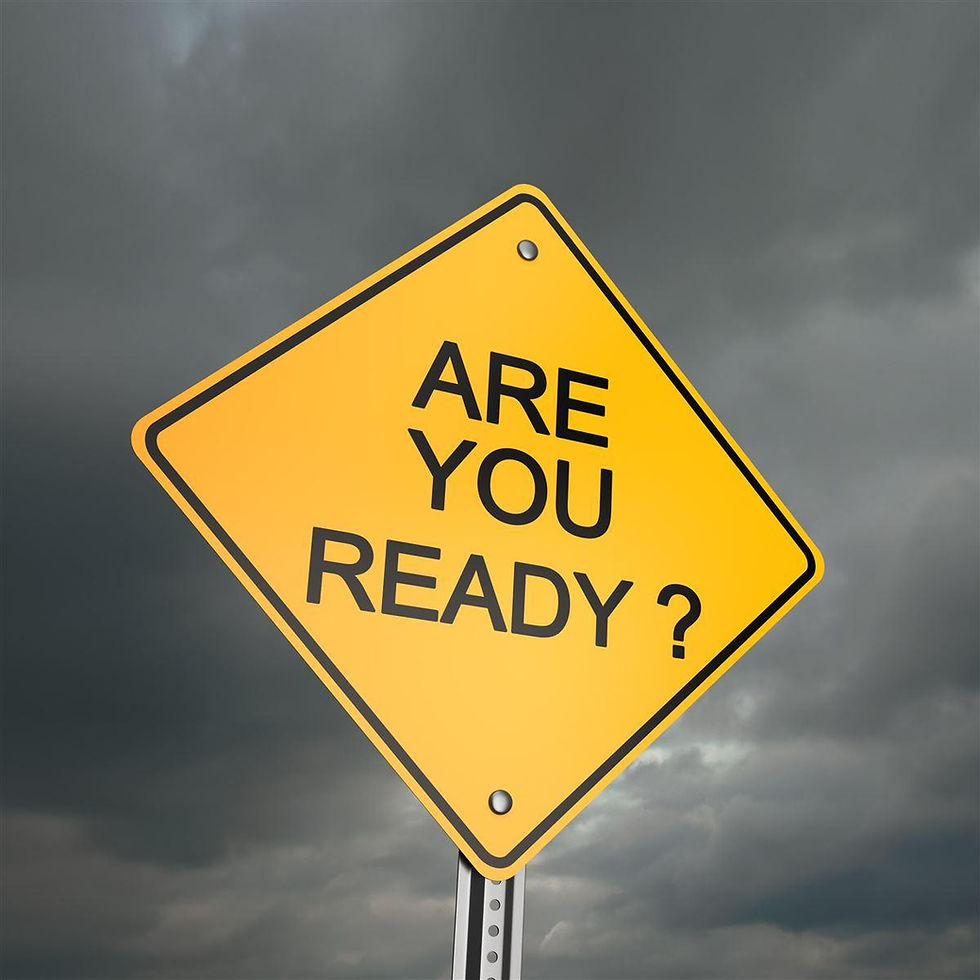Part One: Preparing for Hurricane Season
- Coastal Equine

- Aug 1, 2018
- 3 min read

Coastal Equine Services is committed to preparing our clients for the challenges that arise from residing in a hurricane prone area. Every year, we get calls from concerned horse owners who need to make a quick escape. Our vets want to ensure you or your horse doesn't get left behind because of a failure to plan ahead. Remember, it can take 5 days to receive your coggins.
Should you go or should you stay?
Whenever circular cloud patterns start generating hurricane force winds along the Gulf and Eastern shores of the United States, horse and livestock owners are faced with deciding whether to ride out the storm in place or load their animals, gear, and assorted supplies and travel inland, away from the dangers of the storm.
The best period to prepare for this is well ahead of the time when you need to move out of the path of an approaching hurricane. You should put a disaster plan in place for you (and any boarders you may have) and discuss it regularly to assure everyone is aware of the plan in the event of an emergency. With proper planning and preparation, you can help save your horses lives.
Some things to consider:
1. Making a decision. Before the hurricane season even begins, you will need to decide how severe the storm will have to get before you evacuate your horses. For example, will you stay for a category 2, and evacuate for a category 3? Consider networking within the horse community and determine two possible evacuation facilities in opposite directions. In this way, depending on the storm’s direction or changes in path, you will already have chosen a safe place. Make sure you know ahead of time what the shelter facility owners require and come prepared.
2. Documents and important information. Keep good records handy. In an emergency situation, you may not be able to cross borders without appropriate documentation. You will need copies of the horse’s papers, proof of ownership and clean Coggins along with vaccination and health records that are up to date. You should also have a copy of each horse’s medical history, your veterinarian’s contact information, and a signed permission statement for emergency treatment accompanying each horse. Keep all of your emergency numbers, employee contact numbers, and all other horse owner contact numbers together in one location.
3. Identification. Each horse should be identified by means of a tattoo, brand/ID bands or a micro-chip. Micro-chips are considered the best way to identify a horse. Keep the ID number in a safe place and easily accessible location. After a natural disaster, it will take some time to determine and contact the owners of each horse, so it’s a good idea to use some additional means to easily identify your horse. Tags with emergency information - including insurance information incorporated into the horses halter - is a good way to provide this. Remember, the use of a halter should only be in the event you will transport your horse. If your horse will be staying on your property during the storm, you do NOT want to leave halters on due to tangle/entrapment risks that can result in injury or death. Other ways to ID your horse include using latex spray paint or clippers to paint or clip your phone number on the horse’s back. Or you can use an indelible ink (permanent) marker to write, on a wide ribbon, a light weight luggage tag, or laminated business card. The written information should include your horse’s description, your name and contact information laminate and can be braided into each horse’s mane and tail. If your horse isn’t tattooed or branded, prepare both paper and electronic copies of pictures of your horse for reclaiming purposes. Ideally, this would include a picture of the owner and the horse together to ensure ownership.
4. Medications. If your horse must be sedated for hauling or requires special medication, have these supplies ready and send them with your horse along with needed instructions. Hurricane preparedness for horse owners Continued
5. First aid kit. Prepare an emergency first aid kit (and have it in your trailer at all times). Make sure it is stocked with basic wound care and medications.






Comments